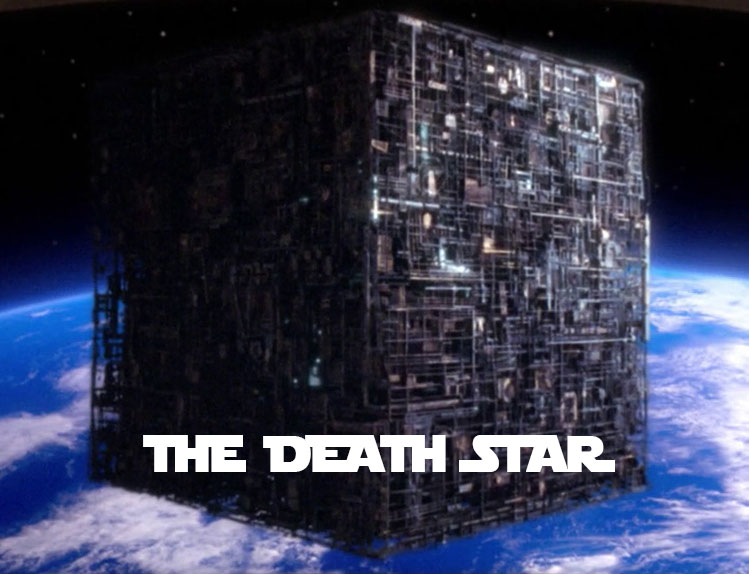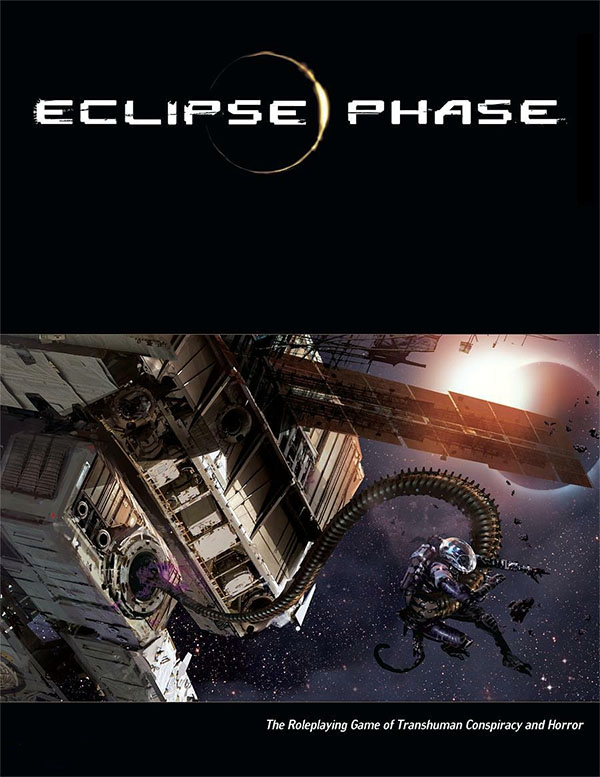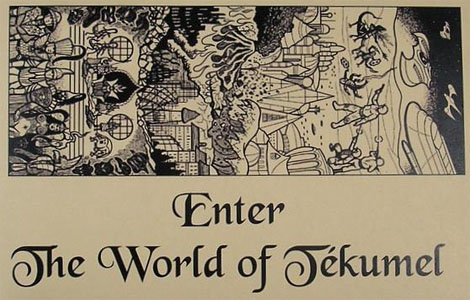Over the years, I’ve run into a number of GMs who are nervous about running a game set in an established setting. Sometimes that’s an established media property (like Tolkien’s Middle Earth or Lucas’ Star Wars), in other cases it’s a published RPG setting. This becomes even more true, of course, when the lore of the setting is particularly dense or particularly expansive. Common examples include Tekumel, Transhuman Space, or even the Forgotten Realms. The perception is that, in order to run such settings, the GM must be possessed of an encyclopedic mastery of their minutia. A similar problem seems to often afflict historical settings.
“I’ve gotta get this right!” is a mental trap that I can understand, but as a GM you need to be comfortable letting it go because it will consistently limit your gaming. Want to run a game set in contemporary Toronto? Well, even if you’ve lived there your entire life, you’re probably going to end up contradicting reality at some point while running it. Ditto if you’re running a World War II scenario or a Victorian London scenario or a Samurai Japan scenario. Running only settings which you’ve created for yourself completely out of whole cloth is a really strict straitjacket that’s going to rob you of a lot of great gaming experiences.
On the flip-side, that doesn’t mean you should get flippant with continuity either. Nobody playing a Star Wars game wants to see the Death Star show up as a giant cube. What you’re looking for is  the “grok threshold”: The point where you fundamentally understand how the setting ticks so that you can make up new details about the setting in a way that’s consistent with the setting as a whole. Once you’ve hit that grok threshold, however, you should then feel free to own the setting (which can also mean making significant changes to the established canon).
the “grok threshold”: The point where you fundamentally understand how the setting ticks so that you can make up new details about the setting in a way that’s consistent with the setting as a whole. Once you’ve hit that grok threshold, however, you should then feel free to own the setting (which can also mean making significant changes to the established canon).
Often the quickest way to hit that grok threshold is to actually start using the setting. A few tips that I’ve found useful:
(1) If you want to look up a detail, give yourself 30 seconds to find it. If you haven’t found it after 30 seconds, make it up. If it turns out that you’ve contradicted something, sort it out after the session (by either revising the setting or explaining the necessary retcon to your players).
(2) If you’ve got a player at the table with expertise, don’t be afraid to leverage that expertise. (“Hey, Bob, what’s the name of the Archduke of the Red Isles?”) On the other hand, if you’re feeling pressured by the expert to “always get it right”, it can be useful to establish upfront that you’ve customized the setting and that people can expect changes. Don’t be afraid of accepting corrections if it’s not a big deal; but if it would mean that you have to scrap all of the prep for your current session just retcon the setting to match your prep and move forward from there.
(3) Dip your toes into the setting starting with areas which aren’t heavily described. Eclipse Phase, for example, is an incredibly dense and complicated setting, but there are thousands of habitats and settlements which have no description whatsoever. Even official locations within the setting will often have only minimal descriptions. For example, this is the description of the Carpo habitat:
Carpo is one of the few moons of Jupiter that is in its own group. This irregular moonlet is only about 3 kilometers in diameter, yet hosts a population of around 17,000 transhumans; over 98% of that number are infomorphs and the remainder synthmorphs. The Carpo infomorphs reside in a simulspace designed and managed by an infomorph calling himself Da5id. The simulspace itself is an alternate historical America, in which transhuman ethics and morality are being applied to 1800s sensibilities. Admission is very strict and seemingly completely arbitrary.
It’s easy to completely master those details and then build on top of them.
(4) With particularly expansive settings, it can also be effective to limit the “official canon” for your games. For example, when I run Star Wars campaigns I have virtually always limited my canon to the six movies created by George Lucas (unless I’m specifically running a game to explore some other chunk of official lore). I’ll freely reach out and grab other interesting bits of lore (planets, characters, etc.) from novels, comics, and animated series (or even the Holiday Special if I’m feeling perverse) — they become resources I can tap without being restrictions which I feel bound by.
WHY BOTHER?
The primary reasons for using a pre-made campaign setting are the extant expectations/knowledge of the players, the sense of shared community, the reduction in prep time, and the injection of someone else’s creative vision with your own.
 Of these, I consider the last to be the most valuable: Just as actors perform the role of Hamlet because they want to take Shakespeare’s creative vision and expand it with their own, so your goal in using a pre-made campaign setting should be to take the creative vision and expand it with your own. The actor playing Hamlet will learn things and create things they would never have created if they had simply improvised their own dialogue; similarly you will learn things and create things you would never have created if you had simply created the setting yourself.
Of these, I consider the last to be the most valuable: Just as actors perform the role of Hamlet because they want to take Shakespeare’s creative vision and expand it with their own, so your goal in using a pre-made campaign setting should be to take the creative vision and expand it with your own. The actor playing Hamlet will learn things and create things they would never have created if they had simply improvised their own dialogue; similarly you will learn things and create things you would never have created if you had simply created the setting yourself.
(Which is not to disparage the art of creating your own campaign setting or improv acting, obviously.)
My point here is that the degree to which you accept the creative vision and the degree to which you transform the creative vision will vary in both part and scale. You want to take the setting of Eclipse Phase, for example, and consciously make some huge changes to the setting like moving the Jovian Republic to Mercury or having the Factors waging a guerilla war against humanity on Mars? Go for it. After you ran the last session you discovered that you were referring to Carpo’s AI as Mel1ssa instead of Da5id? It’s similarly fine if you simply embrace that change and then move forward to see what happens next.













Hi, nice post. I’m curious about that picture at the top, that says “Enter the World of Tekumel.” I don’t recall seeing that exact illustration, and I own a lot of Tekumel products. Can you tell me where it’s from, and maybe who the author is? Thanks!
That is a very good question and, unfortunately, I don’t know the answer. I originally used that image for a review of the Tekumel setting, which means it dates back to either 1999 (original use) or 2013 (when it was archived here on the Alexandrian).
Usually I link images to their source. The original review would have linked to tekumel.com (which may be where I got the image from, although I’m not seeing it there); the new review linked to the GoO edition of Empire of the Petal Throne (and flipping through that book I’m not seeing it).
My fear with running games in very rich settings is that I won’t be able to do them justice. When running a campaign in the Forgotten Realms it was easy to pick an area (Waterdeep), become familiar with that, and start. My players understood the basics of the rest (standard fantasy world, plus too many epic level casters). With Empire of the Petal Throne, I feel the need to compellingly present an alien world, a foreign culture, and a rich history and language. It’s hard to find a touchstone for players and select the “right” pocket of the world in which to start a campaign.
I’ve come to appreciate games that are launched with strong starter adventures for just that reason: It gives the PCs a root in the world, and gives the GM an clear starting point.
Good article, but I’d like your take on a related challenge:
My issue with established settings is often less with my own understanding of it and more with that of my players. I have multiple times, for example, tried to run Talislanta. I love the setting and the details of the various races and civilizations which can get very deep. But those things are very difficult to get across at the table if the players haven’t already read a good portion of the background material themselves—and I have only had a small handful of players in all my years GMing who were willing to do that amount of homework before the first session.
The obvious answer is to find ways to inject lore into the first few sessions, at least enough to make the players feel like their characters are part of a living world. But doing so in a way that doesn’t feel artificial can be very difficult.
Any advice on this front?
Synchronistically, I just tweeted a link to an older post I made about this: Finding Scenario Structures for Transhuman Space.
To simplify, you need to find:
1. An angle for experiencing the world which requires a minimal amount of knowledge of the setting to work; but which also
2. Allows you to create a scenario structure that introduces the elements of the world over time
Ideally this would be coupled with a system in which:
3. Character creation is comprehensible without mastery of the setting/system.
D&D, for example, does an excellent job of this. It does it so well that people think D&D works because it’s just “generic fantasy”… except it’s not. If you look at the totality of the implied setting for D&D (and its specific campaign settings), it’s a huge, glorious, complicated mess. But D&D:
1. Says “start in a small village with a dungeon nearby”; your default options are Tolkienesque fantasy races (even though, technically, there are hundreds of playable races in most editions of D&D).
2. Introduces setting elements over time through dungeoncrawl (and, in some epochs, hexcrawl) structures. The basic scenario structures are very explicable to players, and they can be used to introduce complex setting lore over time.
3. A character creation system featuring a handful of easily comprehensible choices, and which introduce the complexity of both system and setting over the course of play. (If you had a player completely new to D&D, for example, think about why you would never want to start them off with a 15th level wizard.)
Unfortunately it’s been decades since I read any Talislanta material, so I don’t know it well enough to offer specific suggestions about how to find these elements in that setting.
There is no canon – real life doesn’t have one, why should a fantasy world?
I can walk into any bookstore and find scores of books on Napoleon. How can this be? Surely there can only be one canonical history of Napoleon? Think this is only due to the passage of time? I can choose Donald Trump or Queen Elizabeth II and get just as many factual histories.
If there are 12 eyewitnesses to a given event there are initially a dozen factual accounts that are all different.Further, each time these people access their memory of that event, they change that memory. Add second hand accounts and 2 months later no one can be sure of exactly what happened, let alone 200 years later.
There is no reason that inconsistent facts can’t be simultaneously “true”.
If you have an expert at the table but you thought you had something accurate and it isn’t (“Hey in this year the Archduke of the Red Isle is Vortenhim not this joker!!”) then the expertise seems to backfire which can be painful and require massive revisions especially for plot driven adventures. It is important to call a quick halt and revise your plans (perhaps the joker is a deluded person or a has some sort of in game reason for providing misinformation) then go forward from there keeping all of the prep work but reslotted properly (Ie: It was a test).